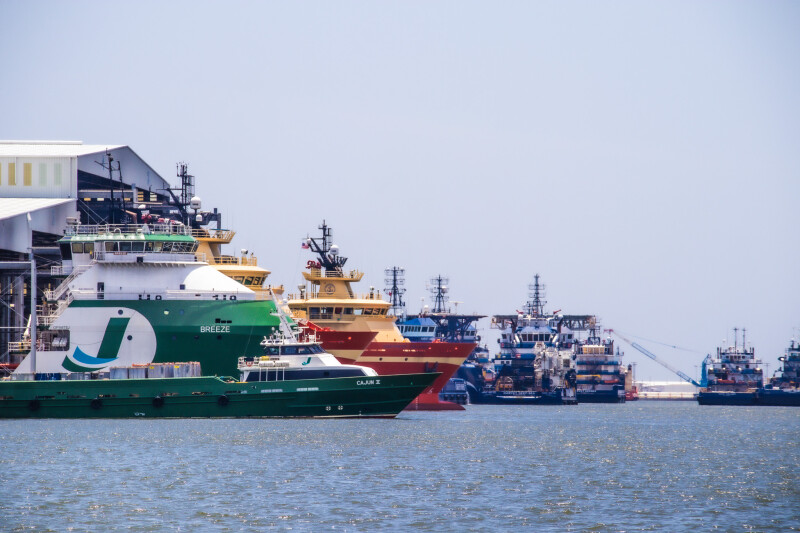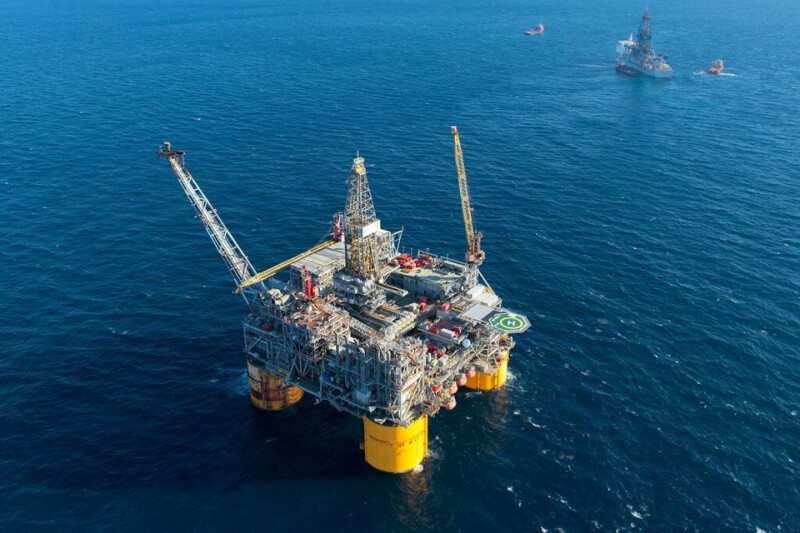Amid flat demand forecasts, political uncertainty, and rising costs, oil and gas producers in the U.S. Gulf of Mexico, also known as the Gulf of America, have seen little incentive to green light new projects, instead focusing on developments that have already been sanctioned.
U.S. energy use is expected to dip in the near term, according to the Energy Information Administration (EIA), which also sees shifting global trade policies and oil production trends cooling demand for petroleum products through 2026. The result: flat production and a downward revision in oil price forecasts.
The EIA forecasts Gulf crude oil production to average 1.8 million barrels per day (b/d) in 2024 and 1.9 million b/d in 2025, compared with 1.9 million b/d in 2023, while natural gas production is expected to average 1.8 billion cu. ft. per day (Bcf/d) in both 2024 and 2025, down from 2.0 Bcf/d in 2023.
Of the Gulf’s 12 new fields that started producing during 2024 or are expected to in 2025, seven are subsea developments that tie back to existing floating production units (FPU), while five of the new fields will produce through four new FPUs. According to the EIA, the development of these new fields has been sufficient to offset the natural production decline of legacy projects in the Gulf, meaning increased spending toward new project development is not needed in the short term amid flat and declining demand forecasts.
Einar Michel, supply chain senior analyst at Rystad, said political uncertainty as well as inflation and increased financial costs have created a “wait and see attitude” among exploration and production operators in the Gulf. “Offshore EPCI [engineering, procurement, construction and installation] spending in 2024 was lower than what was observed in 2023, and in 2025 even less is expected,” he said.

DRILLING DIP
Cinnamon Edralin, Americas research director at Westwood Global Energy Group, wrote in March that several factors are contributing to decreased demand for drillships in the U.S. Gulf fleet, which has seen strong utilization (above 90%) since mid-2021. The region’s total drillship supply is 23, including three sixth-generation units, 18 seventh-generation units, and the world’s only two eighth-generation units, according to Westwood data.
“Several units are poised to roll off charter this year without follow-up jobs lined up yet. This pending drop-off in activity is steep and could see the region’s utilization rate decrease to 70%,” Edralin wrote. “The last time U.S. Gulf drillship utilization was this low was in mid-2018, which was during the extended global industry downturn.”
A combination of rising project costs, persistent supply-chain delays, and a shrinking pool of active operators is driving the short-term dip, according to Edralin. Since 2015, the number of exploration and production operators has dropped from 17 to nine, as companies shift to onshore portfolios, merge, or exit offshore drilling entirely.
“While the second half of 2025 will be challenging for U.S. Gulf drillships that roll off charter, most are expected to ride out the rough waters in anticipation of more work in 2026 and a return to tight utilization,” Edralin wrote.

VESSELS
In terms of vessel utilization and charter rates, 2024 was largely positive for most offshore vessel types working the Gulf as the recovery wave following the Covid-19 pandemic continues, said Rystad’s Michel.
Other regions such as Europe have seen newbuilds ordered and enter the market, but this hasn’t been the case in the U.S., where the cost to construct new Jones Act-compliant vessels is seen as too high. This situation is leading to an aging fleet and declining vessel supply toward 2030 and, potentially, room for market consolidation, according to Michel. “It will be interesting to see if there are any significant consolidations, mergers, or acquisitions in the U.S. Gulf during 2025,” he said.
Vessel reactivations increased in the U.S. Gulf region throughout 2023 and 2024, and Michel noted that it’s likely most vessels capable of returning to service have already done so or are in the process of being reactivated.
“Offshore construction vessel [OCV] demand [in particular] has been increasing and is expected to remain high over the next few years,” said Michel. “However, PSV [platform supply vessel] demand is stabilizing in 2025 before the decline in active offshore platforms causes a slow decline in demand toward 2030. Today’s market conditions are more uncertain than previously anticipated.”
Over the coming 12 months, Michel expects rates for anchor-handling tug supply vessels and PSVs to stabilize and slightly decrease while OCVs rates will keep increasing, but at a reduced rate.
In addition, turbulence in the U.S. offshore wind market could have an impact on the oil and gas sector. “The reduction in offshore wind demand would free up more vessels to work in oil and gas, especially offshore construction vessels which are needed in both markets.”
THE NEXT WAVE
In April, the U.S. Department of the Interior initiated the development of the 11th National Outer Continental Shelf (OCS) Oil and Gas Leasing Program, launching a years-long planning process that could shape the future of offshore energy production. The Bureau of Ocean Energy Management (BOEM) will soon gather input from stakeholders, including industry, environmental groups, and coastal communities.
The new program will eventually replace the current 10th OCS Program (2024–2029), which includes only three planned lease sales in the Gulf of Mexico. The Interior Department, under the direction of President Trump’s Unleashing American Energy executive order, aims to expand domestic oil and gas production by reversing previous drilling bans and fostering energy independence.
“Under President Donald J. Trump’s leadership, we are unlocking the full potential of our offshore resources to benefit the American people for generations to come,” Secretary of the Interior Doug Burgum said in a press release.
Industry groups support the move, citing the offshore sector’s significant economic impact — contributing $33 billion annually and supporting nearly 400,000 jobs. The National Ocean Industries Association emphasized that a stable leasing program promotes investment, innovation, and energy security.
As part of this effort, BOEM is updating its planning areas to reflect changes in jurisdiction. A newly established High Arctic area off Alaska will be added as the 27th official OCS planning area, and adjustments to existing area boundaries will also be made.




